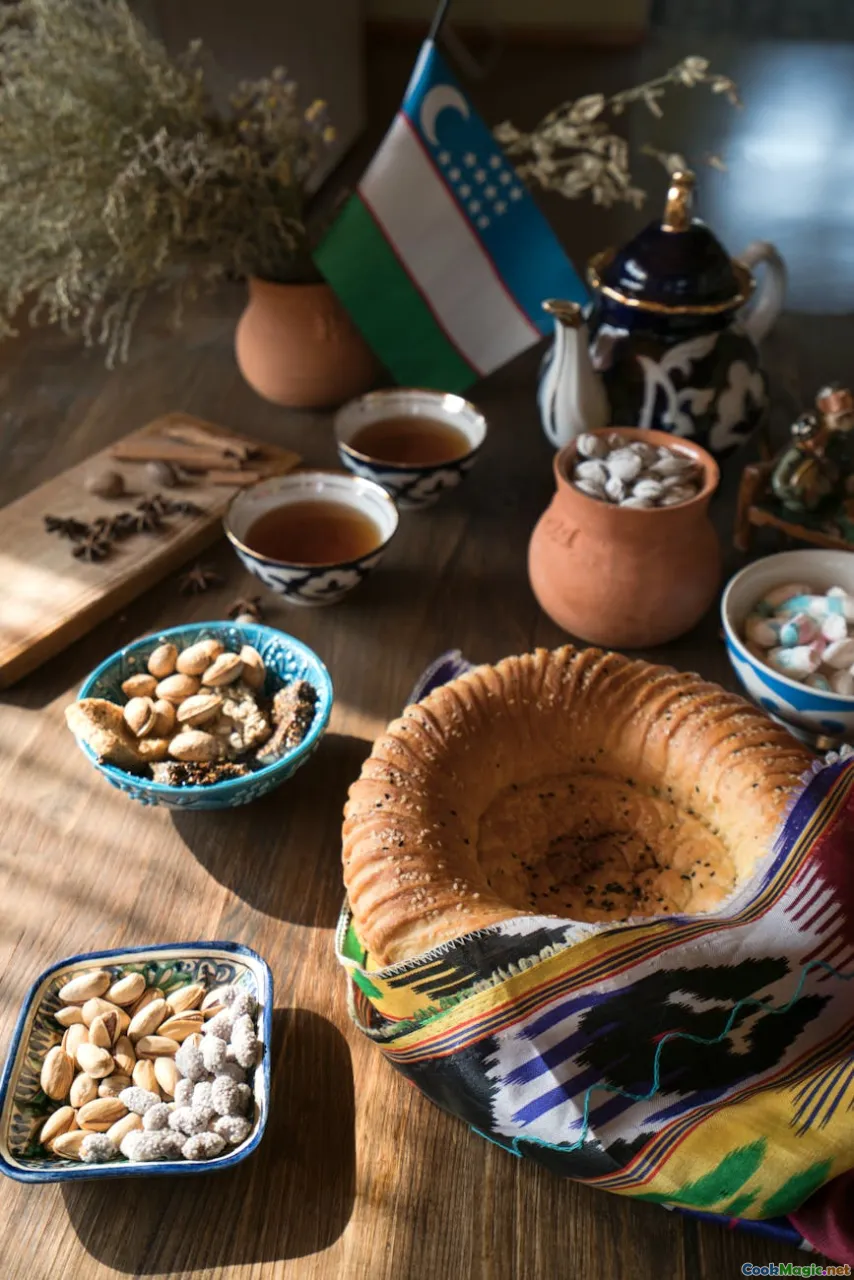Understanding Uzbek Non Why Bread Matters
8 min read Discover the rich history, cultural importance, and sensory delights of Uzbek non — a bread that embodies tradition, community, and identity. April 26, 2025 14:00
Understanding Uzbek Non: Why Bread Matters
Introduction: More Than Just Bread
Imagine walking into a bustling Uzbek bazaar at dawn. The air is thick with the aroma of freshly baked bread—crisp, golden, and warm. This isn’t just any bread; it’s non, the heartbeat of Uzbek culture, a symbol woven into every fabric of daily life. In Uzbekistan, bread is more than sustenance; it’s a sacred tradition, a living testament to centuries of history, community, and spirituality.
The story of Uzbek non is a journey that traverses the ancient Silk Road, embodies the resilience of nomadic tribes, and reflects the deep-rooted values of hospitality and unity. To understand why non matters so profoundly in Uzbek society is to understand a nation’s soul.
The Cultural Significance of Uzbek Non
A Ritual of Respect and Hospitality
In Uzbekistan, offering bread is a gesture of respect. When visiting someone’s home, it’s customary to be greeted with a round of non, often accompanied by sweets like samsaorpashmak. This act signifies trust, friendship, and a welcoming spirit. The non itself becomes a symbol of hospitality that transcends social boundaries.
A Sacred Element in Celebrations
During weddings, religious festivals, and community gatherings, non takes center stage. It’s often decorated, sometimes topped with sesame or nigella seeds, and presented with reverence. The act of breaking bread together fosters bonds and reinforces communal identity.
An Embodiment of Tradition
Each region in Uzbekistan boasts its own unique style of non—varying in size, shape, and baking method. These variations are a reflection of local traditions, climate, and resources, making non a living canvas of cultural expression.
The Historical Roots of Uzbek Non
From Ancient Silk Road to Modern Tables
Uzbek non’s origins trace back thousands of years, closely tied to the ancient Silk Road that once connected China to Europe. Caravans crossing deserts and mountains carried not only silks and spices but also culinary practices that have endured through ages.
Nomadic Influences and Innovations
Nomadic tribes in Central Asia relied heavily on bread as a portable, energy-rich food. Their baking techniques—circular shapes, open-flame ovens, and simple ingredients—have persisted, maintaining a link to ancestral ways of life.
Preservation of Heritage
Despite modern influences, traditional methods of making non remain alive. The use of tandir—an underground clay oven—imparts a distinctive smoky flavor and crispy crust that modern bakeries strive to replicate.
The Art and Technique of Making Uzbek Non
Ingredients: Simplicity with Depth
The core ingredients are flour, water, salt, and sometimes yeast. The choice of flour—whether wheat or a blend—affects texture and flavor. High-quality, locally milled flour is preferred for its richness.
The Craft of Shaping
Non is traditionally shaped by hand, forming a perfect circle or oval, often decorated with intricate patterns or symbols that carry cultural significance. The dough is gently stretched, then topped with sesame or nigella seeds, adding flavor and visual appeal.
Baking in the Tandir
The tandir oven is a marvel of ancient technology. It’s heated by burning wood or charcoal, reaching temperatures exceeding 400°C. The baker sticks the shaped dough onto the hot walls of the tandir, where it bakes rapidly—resulting in a crust that is simultaneously crispy and airy.
The Sensory Experience
The moment the bread emerges, it’s a sensory delight. The aroma of toasted seeds and baked dough fills the air. The crust crackles under the touch, while the interior remains soft, chewy, and fragrant.
Non in Daily Life and Celebrations
Everyday Bread
In most Uzbek households, non is baked daily, often in the early morning hours. It’s served with every meal—paired with plov (pilaf), shashlik (kebab), or fresh vegetables. Its neutral flavor complements the bold spices and rich flavors of Uzbek dishes.
Special Occasions
During festivities, non becomes a symbol of abundance and prosperity. Large, elaborately decorated non are baked for weddings and religious holidays, sometimes adorned with symbols like the sun, moon, or traditional motifs.
Modern Takes and Preservation
While traditional methods remain cherished, modern bakeries experiment with new flavors—adding herbs, cheese, or dried fruits—yet always respecting the core techniques that define authentic Uzbek non.
Personal Reflections and Encounters
As a food enthusiast, I’ve had the privilege of witnessing firsthand the making and sharing of non in Uzbekistan. The experience is profoundly communal—kneading dough with elderly women in a village, watching a young baker skillfully place bread into a tandir, feeling the warmth of freshly baked non in my hands.
One vivid memory is of a family gathering in Samarkand, where a round of non was broken and shared among generations. The crackling crust gave way to soft, fragrant bread, and in that moment, I understood that non isn’t just food—it’s a vessel of history, love, and tradition.
Conclusion: More Than Just Bread
In Uzbekistan, non is a reflection of life itself—simple yet profound, humble yet deeply meaningful. It’s a testament to resilience, community, and cultural pride. Every bread baked in a tandir carries stories of ancient trade routes, nomadic journeys, and familial bonds.
To truly appreciate Uzbek non is to taste a piece of history, to feel the warmth of hospitality, and to honor a tradition that continues to nourish both body and soul. So next time you bite into a piece of non, remember—you’re partaking in a centuries-old story that unites a nation, one crust at a time.









